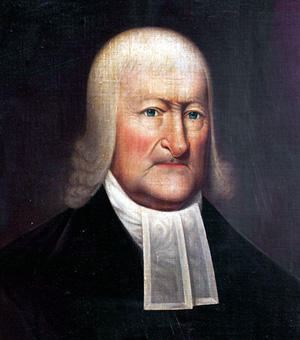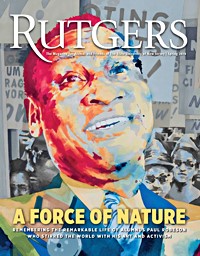John Henry Livingston
Queen’s College President, 1810 to 1825

Livingston was born in Dutchess County, near Poughkeepsie, New York, graduated from Yale College in 1762, and by 1766, the year Queen’s College was founded, set sail for Amsterdam to study theology. He was licensed and ordained by the Classis of Amsterdam in April 1770, and one month later received the degree of doctor of theology from the University of Utrecht.
Upon his return from Holland in 1770, Livingston became one of the ministers of the Reformed Church in New York. He also brought back with him an agreement that ended the controversy between the Coetus and the Conferentie, the two factions of the Dutch church in America. Livingston served the church in New York for 40 years, and for three years he was the sole pastor before being joined by the Reverend William Linn in 1786. With the revival of Queen’s College in 1807, the trustees called the Reverend Livingston to the office of president and the professorship of theology. He initially declined, but finally accepted in 1810, when the trustees assured him that he was only “to preside at commencement and authenticate diplomatic documents and take general superintendence of the institution as far as . . . [his] time and health [would] admit.”
Though John Henry Livingston initially declined the office of president, he accepted in 1810, after the trustees assured him that he was only “to preside at commencement and authenticate diplomatic documents and take general superintendence of the institution as far as . . . [his] time and health [would] admit.”
By the end of Livingston’s first year as president, Queen’s College was faced with such financial problems that construction was halted on its new building. The trustees had expended $20,000 on the building but only $12,000 had been raised through subscriptions. In January 1812 the trustees received approval by the State Legislature to conduct a lottery to raise the needed funds, but the venture fell short of its intended goal. Depressed economic conditions during the War of 1812 had hindered the trustees’ ability to secure adequate funds for the college. By 1816 the Trustees were forced to suspend collegiate instruction and turn over the building to the synod for use by the theological school.
Although Livingston continued to instruct in the theology school, the college had remained dormant. The trustees, lacking sufficient funds to repair the building, were pressed to pay the debt incurred with the construction of Old Queens. In 1823 the trustees agreed to sell the building and the lot to the church synod for $4,000. Free of debt, the trustees turned toward reviving the college and appointed a committee to confer with the synod. Its members included Dr. Philip Milledoler, soon to become the next president of the college, Abraham Van Nest, and Jacob R. Hardenbergh, son of the former president who had graduated from Queen’s College in 1788.
The Reverend John Henry Livingston died on January 25, 1825, 10 months short of the reopening of the college. Though his involvement in the college was minimal, he had given it the prestige of his name. Under his direction, theological instruction had flourished. During his last year in New Brunswick, he had close to 30 students studying for the ministry.
This biographical sketch was authored by Thomas J. Frusciano, Rutgers University Archivist. It originally appeared in The Journal of the Rutgers University Libraries.

